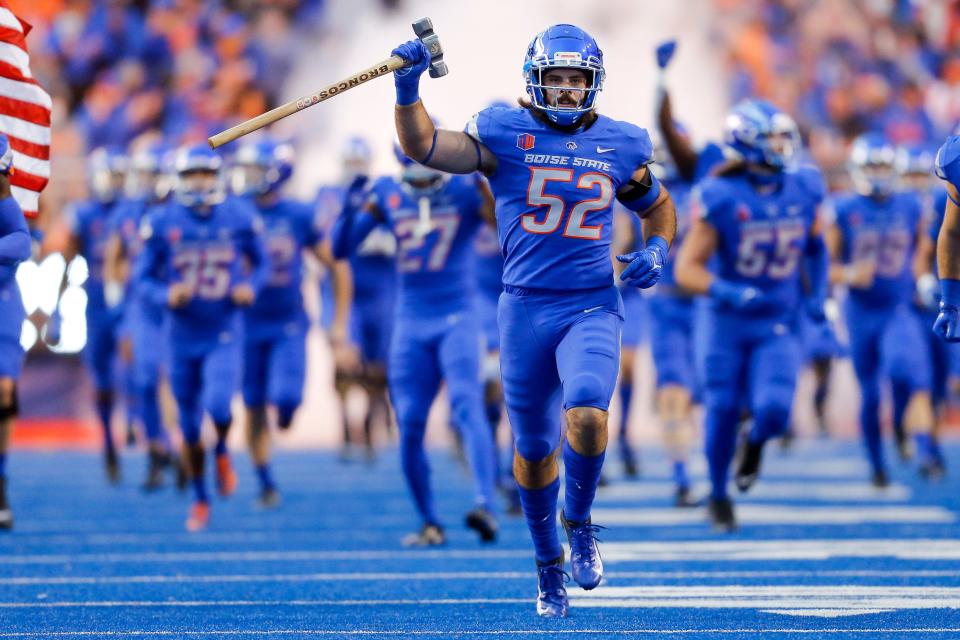From top to bottom, conference realignment is gripping college sports. Here's what's next.
When the Big 12 recently invited Cincinnati, UCF, BYU and Houston to reconfigure yet again after Texas and Oklahoma declared their intent to join the SEC, it brought an end to the latest round of conference realignment at the power conference level.
But the landscape of college football, and all of college sports, isn’t even close to settled. The Texas/Oklahoma move didn't just shake up the SEC’s peer leagues; the effect is being felt all the way through the Football Bowl Subdivision down to the lower levels of Division I.
Beyond an expected reorganization of schools in the so-called Group of Five conferences, there is a renewed urgency among smaller schools with big football ambitions to position themselves in the best possible way for whatever the next iteration of the NCAA looks like. With the NCAA announcing a constitutional convention to dramatically overhaul the organization’s governance structure — and, ultimately, hand the major football-playing schools more power — administrators and school presidents are concerned that the last ship for any potential upward mobility from FCS to FBS, or from Division II to Division I, may be about to set sail.
“A lot of people are nervous,” said one Division I athletics director. “If you want to make a move, you’re at the crossroads. You have to do it now.”

USA TODAY Sports spoke to 17 people across college sports who described the far-reaching impact of Texas and Oklahoma's SEC move and how their school or conference is positioned for the next round of realignment. All of them were granted anonymity in order to discuss a topic for which they aren’t authorized to speak publicly.
AAC vs. Mountain West
Nowhere is the uneasiness more evident than in the American Athletic Conference, which lost three of its most prominent schools to the Big 12 and will be down to eight football playing members plus Wichita State in basketball and other sports.
The focus for commissioner Mike Aresco has been to solidify the AAC’s status as the No. 6 conference. To do that, the preferred track would be kneecapping its most prominent rival in the Mountain West by adding Boise State, San Diego State, Air Force and Colorado State to form a league that would reach all corners of the country.
BOWL PROJECTIONS: Iowa joins College Football Playoff field, New Year's Six gets shuffled
The argument from the Mountain West is that stability and geography favors staying put rather than moving to the AAC, where schools like Memphis and South Florida will be hoping to get called up if the Big 12 has another round of expansion in the next few years.
But Aresco is aggressively making the case that the AAC would preserve its television contract with ESPN — worth roughly $7 million annually per school — by adding those four and particularly Boise State, which is considered by analysts the most valuable television property not currently in a Power Five league.
If Aresco is correct that the value of the AAC’s television contract won’t change, those Mountain West schools could roughly double their money by making the move.
Among the four, Air Force is viewed as the most eager to make the jump as it would put them in the same conference as Navy and give their recruiting efforts a stronger presence in the East. Colorado State is not necessarily tied to Air Force, but as in-state rivals, it would make sense for them to move in tandem.
If they make the decision to jump, Boise State and San Diego State would have to consider whether it would make sense to stay in a diminished Mountain West with schools such as UNLV, Nevada, San Jose State, Fresno State and Hawaii that have significant budget issues and questions about institutional commitment.
If the AAC can’t pull off its Western gambit, or only lures Air Force, the focus would likely turn to UAB and Charlotte from Conference USA as well as perhaps Army, which plays as an independent and has rejected multiple overtures to join a league in football.

 Yahoo Autos
Yahoo Autos 